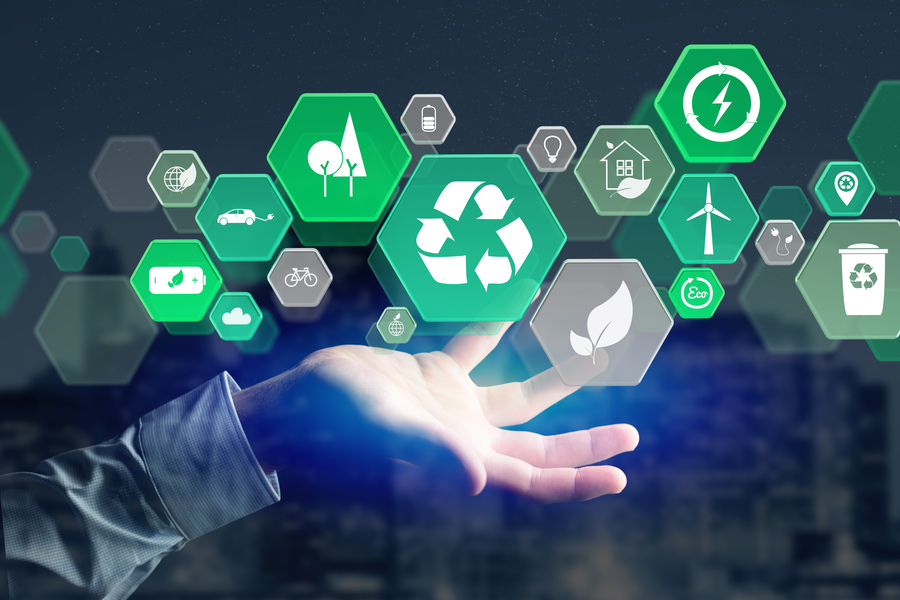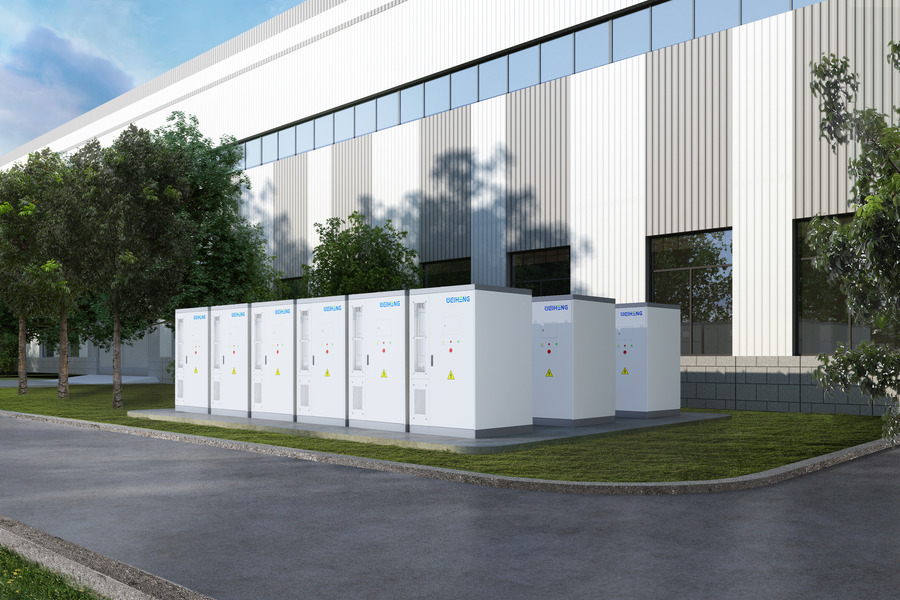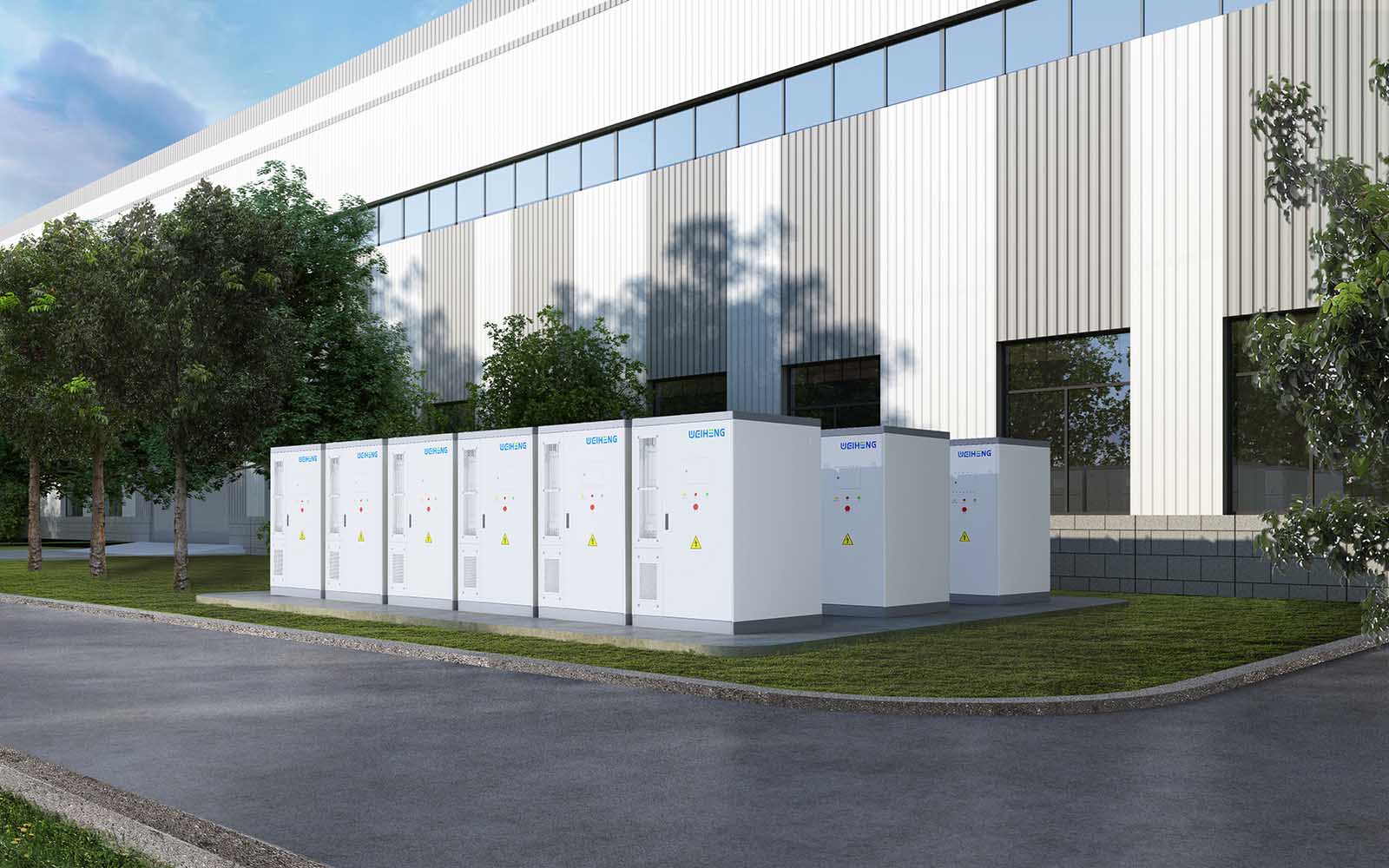
The move away from energy sources based on fossil fuels and nuclear power and towards renewable and clean energy sources is well and truly on its way.
Electric vehicles, residential and commercial solar systems, and commercial wind farms are only a few examples of the move toward a more sustainable future.
A common and essential element of these renewable energy systems is the battery, which stores electrical energy.
While the battery enables storing energy, its proliferation raises a serious concern: how can we prevent the disastrous environmental impact of millions of used and discarded solar batteries? The answer lies in recycling solar batteries.
This article will cover the components of Battery Energy Storage Systems (BESS), the main types of solar batteries and their components, and then move on to the essential discussion about solar battery recycling.
Solar BESS Components
Most components of a solar BESS have a finite operating lifespan. Therefore, in the context of recycling, it is crucial to take a holistic approach rather than one centred on only the storage component.
Before we go into details about solar batteries and their recycling, let’s first get an overview of the main components of a complete solar and storage system.
- Solar PV Array: The solar array comprises photovoltaic (PV) panels that convert sunlight into electrical energy. The PV array is the primary energy source for the BESS.
- Inverter: An inverter converts DC power from the PV array to AC power for your household or business. For grid-tied systems, the inverter manages the excess AC power you sell back to the utility companies. A charge controller in the inverter controls the current flow between the PV panels and the battery bank to prevent overcharging and undercharging. Many solar systems use bi-directional inverters that convert AC power from the grid or a generator to DC power for charging solar batteries.
- Battery Bank: A collection of batteries that store DC energy produced by your solar PV system.
- Battery Management System (BMS): The BMS monitors and manages the battery bank’s performance. It controls battery charging and discharging, prevents overcharging and deep discharging, and ensures dangerous conditions – such as thermal runaway – are avoided. Through control interfaces, the BMS communicates with external systems and applications customers use to monitor system performance, view energy production and consumption data, and make necessary adjustments.
- Grid Connection: For grid-tied systems, a grid connection allows the sale of excess power to the utility company. Likewise, a grid connection enables the drawing of power supplied by the utility company during periods of low or zero (e.g., winter or nighttime) solar energy production.
- Enclosures and Safety Equipment: Proper enclosures, safety disconnects, and protective devices help ensure the BESS’s safety and that of personnel who come into contact with the system.
Types of Solar Batteries
Solar batteries are like other rechargeable batteries in that they can be recharged and used multiple times.
However, there are significant differences between solar and conventional rechargeable batteries, including the following:
- Deep cycling: Solar batteries are designed for regular deep discharges followed by their recharging.
- Higher capacity: Automotive batteries are designed to provide power for ignition and low-power vehicle lighting. Solar batteries, however, are designed to provide high power output for extended periods.
- Longer lifespan: The operating lifespan of solar batteries ranges from 5 to 15 years. The lifespan depends on several factors, including battery type, cycle life, operating environment, and quality of maintenance.
The two main types of solar batteries are lead-acid and lithium-ion.
Lead-Acid Batteries
Lead-acid batteries are the most popular battery type for use in cars, but can also be used for solar applications. Lead-acid batteries use chemical reactions between water, sulfuric acid, and lead to store energy.
The technology dates back more than 100 years. Their popularity stems from their robustness, reliability, and lower cost.
There are two main types of lead-acid batteries:
- Flooded: These are inexpensive but require regular maintenance.
- Sealed: These batteries are sealed to prevent electrolyte evaporation and do not require maintenance. Sealed batteries are more expensive compared to flooded lead-acid batteries.
Lithium-Ion Batteries
Lithium-ion battery technology was developed in the 1970s. These batteries are more expensive than lead-acid batteries, but they offer several benefits that make them the best option for solar energy storage.
Some of the benefits offered by lithium-ion solar batteries include a higher depth of discharge, a longer lifespan, a higher energy density, higher efficiency, and less maintenance.
The two common types of lithium batteries are:
- Lithium iron phosphate (LFP or LiFePO4): These batteries are used in vehicles, backup power, and utility-scale applications.
- Lithium nickel manganese cobalt oxide (Li-NMC): Typically used for mobile devices and electric vehicles.
The lithium-ion segment is by far the most common in use in the solar industry. It is expected to reach an annual value of $455 million by 2030 with a compound annual growth rate of 15.7%. Interestingly, the lead-acid segment is the fastest growing, with a compound annual growth rate of 17.8%, but expected to reach only $25 million by 2030. This fast growth is probably down to the cheaper cost.
The Need for Recycling

Solar batteries offer a cost-effective storage solution for energy produced by residential and commercial PV systems. They have become increasingly popular as homeowners and businesses look for ways to reduce their carbon footprint and move towards a sustainable future.
However, the environmental impact of solar battery production and the millions of used and discarded solar batteries must also be considered.
Environmental Concerns Related to Solar Battery Production
A primary concern relates to the environmental impact caused by mining for the rare earth metals used in battery production. The mining process is expensive and can harm the environment through water pollution and the destruction of animal habitats. Every tonne of lithium extracted through mining leads to the release of approximately 15 tonnes of carbon dioxide.
The battery manufacturing process also contributes significantly to greenhouse gas emissions. For example, estimates for CO2 emissions related to producing the 80 kWh lithium-ion battery used for the Tesla Model 3 range from 2,400 to 16,000 kg.
Environmental Concerns Related to Solar Battery Disposal
Solar batteries have a finite operating lifespan and require periodic replacement. Improper disposal can lead to heavy metals and toxic chemicals being released into the atmosphere, potentially harming humans and the environment.
Despite these concerns, the environmental impact of solar batteries is still much lower than that of traditional fossil fuel-based energy sources. Solar batteries produce no greenhouse gas emissions during use, and their production and disposal can be managed in an environmentally responsible way.
It is also essential to dispose of old batteries properly, either by recycling them or taking them to a hazardous waste disposal site. Recycling also reduces the need for landfill disposal or incineration of used batteries, preventing the release of harmful chemicals into the environment.
While solar batteries do have an environmental impact, they are still a much greener alternative to traditional energy sources. By choosing a responsible manufacturer and disposing of old batteries correctly, you can minimise the impact of solar battery use on the environment.
Legal and Ethical Reasons for Responsible Disposal
Laws and regulations in many developed and developing countries cover waste battery disposal and recycling. In the UK, for example, regulations make it compulsory for manufacturers and businesses involved in the supply chain to collect and recycle batteries and prevent incineration or dumping in landfills.
Solar Battery Components
Each battery is a complete system of interdependent components that allow it to store energy.
Electrodes and Separators
Electrodes are electrical conductors used to connect battery terminals to the electrolyte. The positive electrode is called the cathode, and the negative electrode is called the anode.
The cathode is lead-dioxide for lead-acid batteries, and the anode is metallic lead. For LFP batteries, the cathode is lithium iron phosphate, and the anode is graphite carbon.
Batteries use separators to prevent short circuits by separating the anode and cathode.
Lead-acid batteries use separators made of polyethylene, polyvinyl chloride, and other materials. Lithium-ion batteries use separators made of polyethylene or polypropylene.
Electrolytes
Electrolytes carry electrical charge between the anode and cathode.
The electrolyte solution for lead-acid batteries contains sulfuric acid. The most common electrolyte for lithium-ion batteries is lithium salt in an organic solution.
Casings and Connectors
The most common materials for battery casings are plastic and thermoplastic polymers such as acrylonitrile butadiene styrene (ABS).
In addition, enclosures that house multiple batteries are often used, especially for outdoor and marine applications. The material used for enclosure construction depends on the cost and applications. Popular materials for battery enclosures include plastic, metal, plywood, and concrete.
Connectors connect the battery and external systems, such as inverters and solar panels. These connectors are usually made of copper, an excellent conductor of electricity. Additionally, copper cables connect the battery connectors and external systems. The copper wire is covered with insulation for electrical and personnel safety.
Variability in Component Recyclability
Solar battery components can be recycled. However, the effectiveness of recycling processes and the recovery rates of materials vary, with some materials being more easily recovered than others.
Lead-acid batteries have been around the longest. Their production process is standardised and more straightforward compared to batteries based on newer technologies. Approximately 95% of the UK’s portable batteries were reportedly recycled in 2022, of which 71.15% were lead-acid, compared to approximately 98% of all lead-acid batteries in the US and Canada. Recovered components include lead, acids, plastics, and other materials.
Lithium batteries are based on modern technology. The fabrication process is more complex, and five different chemistries are used for the cathode, where the valuable metallic compounds reside. Unlike lead-acid batteries, however, there are no large metal plates that would make smelting and recycling easy. Recovery of lithium with currently available recycling processes is costly. As a result, only around 5% of lithium-ion batteries get recycled globally.
Improved recycling processes and technology will minimise waste and reduce the environmental impact of used solar batteries.
Recycling Process for Solar Batteries
The recycling process for solar batteries includes multiple stages, including collection and sorting, battery breaking, and material recovery.
Collection and Sorting
The first step in the solar battery recycling process is collecting and sorting used batteries. Sorting batteries according to their chemistry and type helps to ensure that the batteries are processed as efficiently and effectively as possible.
Battery Breaking
After sorting, solar batteries are broken down into constituent parts. This involves crushing the batteries and separating the materials, such as metals and plastics, using various techniques. The resulting materials are then sorted and further processed.
Material Recovery
The final stage of the recycling process involves recovering valuable materials from the broken-down batteries. These materials can include metals such as lithium, cobalt, copper, lead, and nickel, as well as plastics and other materials.
Materials recovered through recycling can be used to make new batteries or other products.
Challenges in Solar Battery Recycling
Recycling all solar batteries is an ideal to which we can strive. However, in reality, many technical and economic challenges constrain the extent to which all solar batteries can be recycled.
Technical Hurdles
Recycling solar batteries is a complex process. The batteries contain hazardous materials that require careful handling and disposal. Additionally, the intricate design of solar batteries makes them difficult to recycle. The following are some technical challenges associated with recycling solar batteries:
- Separation of materials: Solar batteries contain various materials, including metals, plastics, and chemicals. Separating these materials is a complex process that requires sophisticated equipment and expertise.
- Battery design: The design of solar batteries can vary widely depending on the manufacturer. Some batteries are designed to be easily disassembled, while others are not. That can make it challenging to develop a standardised recycling process.
- Chemical processes: The chemicals in solar batteries can be hazardous to human health and the environment. Recycling these batteries requires careful management of these chemicals to prevent contamination.
Economic Factors
Recycling solar batteries is also challenging from an economic perspective. The following are some of the economic factors that make solar battery recycling difficult:
- Cost: Recycling solar batteries can be expensive, particularly if the batteries are not designed for easy disassembly. The cost of recycling can be higher than the value of the materials recovered.
- Market demand: The demand for recycled solar batteries is currently low. That means there is no significant market for recycled battery materials, making it difficult for recycling companies to operate profitably.
- Infrastructure: The availability of recycling infrastructure and easy access to it reduces the cost of recycling. Battery recycling infrastructure is available in some developed countries but only in some developing ones. Infrastructure non-availability is a significant barrier to solar battery recycling.
- Regulations: Regulations surrounding the handling and disposal of hazardous materials can be complex and vary by jurisdiction. That can make it difficult for recycling companies to navigate the regulatory landscape.
Future Perspectives on Solar Battery Recycling
As the demand for solar energy continues to grow, so does the need for sustainable and environmentally friendly ways to dispose of end-of-life solar batteries. Fortunately, the future of recycling solar batteries looks promising, with several new technologies and initiatives on the horizon.
One of the most promising developments in solar battery recycling is hydrometallurgical processes that use chemicals to break down the battery components, allowing for the extraction of valuable metals such as lithium, cobalt, and nickel. These metals can then be reused to produce new batteries, reducing the need for further mining and decreasing the environmental impact of battery production.
Another exciting development is using robotic technologies to disassemble and sort batteries. This increases the recycling process’s efficiency and reduces the risk of worker injury. Additionally, robots can help identify and separate batteries with high residual energy, reducing the risk of fires and other hazards.
In addition to these technological advancements, several initiatives are aimed at increasing the recycling rate of solar batteries. For example, the EU has set a target of recycling 73% of all batteries by 2030, focusing on increasing the collection and recycling of portable batteries.
Overall, the future of solar battery recycling looks bright, with new technologies and initiatives paving the way for a more sustainable and environmentally friendly energy future.
By recycling solar batteries, we can reduce our reliance on mining, decrease the environmental impact of battery production, and ensure that valuable resources are used efficiently and effectively.
eCactus Solar UK offers a complete range of residential and commercial BESS solutions.

We advocate a green circular economy and source products from suppliers that use renewable energy and support energy saving, emission reduction, and resource recycling in their enterprises and supply chains.
Contact us today to discuss the possibilities for a greener future.







